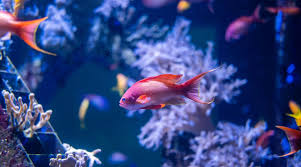Dragon-Themed Amusement Parks in China: A Journey Into Myth and Adventure

China, a country steeped in rich history and mythology, has long been captivated by the mystique of the dragon. Symbolizing power, fortune, and imperial authority, the dragon holds a significant place in Chinese culture. This mythical creature is not only an important cultural and religious symbol but has also become a key element in modern entertainment and tourism in China. One of the most notable ways in which the dragon has transcended its traditional significance is through its integration into theme parks, providing visitors with an immersive experience that combines adventure, mythology, and cultural heritage. This article explores some of China’s dragon-themed amusement parks, examining how these parks incorporate the mythical dragon into their designs, attractions, and cultural offerings.
The Significance of Dragons in Chinese Culture
Before delving into the specifics of dragon-themed amusement parks in China, it’s essential to understand the cultural significance of dragons. In Chinese mythology, dragons are seen as powerful and benevolent creatures associated with good luck, prosperity, and imperial power. Unlike the destructive dragons of Western folklore, Chinese dragons are symbols of good fortune and are often depicted as wise and majestic beings who bring rain, control rivers, and ensure the prosperity of the land.
In traditional Chinese culture, the dragon is intimately tied to the emperor, who was often referred to as the “Son of Heaven” and was thought to rule under the divine mandate of the dragon. The creature also plays an important role in various Chinese festivals, such as the Dragon Boat Festival, where dragon-shaped boats race in celebrations of strength and teamwork.
Given its deep cultural roots, it is no surprise that the dragon has become a prominent theme in China’s modern tourism industry, especially in theme parks, where it serves to bridge the ancient with the contemporary.
Dragon-Themed Amusement Parks: A Blend of Myth and Modernity
Dragon-themed amusement parks in China are designed to offer visitors an opportunity to engage with one of the most important symbols in Chinese culture in a fun, interactive, and imaginative way. These parks often feature large-scale dragon sculptures, themed rides, and immersive experiences that bring the myths and legends of the dragon to life. They cater not only to Chinese visitors but also to tourists from around the world who are eager to experience a blend of Chinese mythology, history, and cutting-edge entertainment.
1. Happy Valley Beijing: A Dragon’s Tale
Located in Beijing, Happy Valley Beijing is part of a larger chain of theme parks across China, known for its expansive attractions and engaging experiences. One of the most remarkable features of this park is its integration of dragon-themed rides and designs, which reflect the deep cultural ties to Chinese mythology.
One of the standout attractions in the park is the Dragon’s Journey ride, a thrilling roller coaster that takes visitors on a high-speed adventure through a series of twists and turns, designed to mimic the motion of a flying dragon. The ride is accompanied by impressive visual effects, with giant dragon statues and screens projecting scenes from Chinese mythology, such as dragons battling mythical creatures or protecting the kingdom. Visitors not only experience the excitement of the ride but also become immersed in the cultural narrative of the dragon’s importance.
The park’s design also features a variety of dragon sculptures, including a massive dragon sculpture at the entrance, which symbolizes the park’s connection to Chinese culture and sets the tone for the adventure awaiting inside. The dragon theme is woven throughout various areas of the park, such as the Dragon Market, where guests can enjoy shopping for souvenirs and traditional Chinese arts and crafts.
Happy Valley Beijing uses the dragon as a metaphor for power and fortune, and the park itself reflects these attributes through its wide range of attractions and experiences, from exhilarating rides to relaxing cultural exhibits.
2. Chimelong Paradise: A Dragon-Filled Adventure
Located in the coastal city of Zhuhai, Chimelong Paradise is another prominent amusement park in China where dragons take center stage. The park is part of the larger Chimelong International Ocean Resort, which includes a variety of entertainment facilities such as an oceanarium, safari park, and water park. Known for its vibrant and action-packed attractions, Chimelong Paradise offers an immersive experience that celebrates Chinese dragon culture.
One of the most notable dragon-themed features in Chimelong Paradise is the Dragon Roller Coaster, which is considered one of the best roller coasters in China. The ride is designed to evoke the experience of flying on the back of a dragon, with twists, drops, and spirals that create the sensation of soaring through the skies. The ride’s design incorporates Chinese dragon motifs, including fire-breathing effects, large dragon heads, and vibrant colors that add to the spectacle.
In addition to the roller coaster, Chimelong Paradise also features Dragon Waterfalls, a water ride that takes visitors on a journey through a lush, dragon-themed landscape. The ride includes thrilling drops and sprays, adding to the excitement and adventure for all ages. Throughout the park, dragon imagery is used in architectural designs, restaurants, and even street performances, reinforcing the theme of power, adventure, and the mystical allure of the dragon.
Chimelong Paradise has effectively capitalized on the symbolic power of the dragon to enhance its status as a top-tier amusement destination, combining modern technology with Chinese cultural motifs to create a truly unique and entertaining experience for visitors.
3. Dragon Town at Feng Shui World
Located in the province of Hunan, Feng Shui World is a theme park that immerses visitors in the cultural and spiritual traditions of China, with a particular focus on the principles of Feng Shui. One of the park’s most striking features is Dragon Town, a section dedicated to the dragon, where visitors can experience both the mythical and the spiritual dimensions of the creature.
Dragon Town is designed to showcase the dragon’s role in Chinese culture as a bringer of good fortune and harmony. The area is filled with beautiful dragon sculptures, intricate designs, and interactive exhibits that explain the dragon’s importance in Feng Shui. According to Feng Shui principles, dragons are believed to have the power to control the flow of energy (Chi) and ensure prosperity and good health for those who align themselves with the dragon’s positive influence.
Visitors to Dragon Town can participate in activities such as Dragon Dance Workshops, where they can learn about the significance of the dragon in Chinese festivals and even try their hand at performing the famous dragon dance. Additionally, the area includes traditional Chinese garden landscapes that feature dragon-inspired water features, bridges, and sculptures, allowing visitors to explore the serene and symbolic connection between the dragon and the natural world.
Dragon Town at Feng Shui World is a unique fusion of ancient philosophy, mythology, and entertainment, offering visitors an enriching experience that goes beyond the thrill of amusement rides.
Other Notable Dragon-Themed Attractions in China
While Happy Valley, Chimelong Paradise, and Feng Shui World are among the most notable dragon-themed amusement parks in China, there are other attractions that incorporate dragon motifs in creative and engaging ways.
Wuxi’s Dragon Head Park is a famous tourist spot that features a giant dragon sculpture at its center. The park celebrates the ancient Chinese dragon through its architectural designs, sculptures, and historical exhibits, allowing visitors to connect with Chinese heritage while enjoying the natural beauty of the park.
Shenzhen’s Window of the World is another iconic park that incorporates dragons into its cultural and theme park exhibits. The park features replicas of famous global landmarks, including a stunning display of a dragon-inspired temple, which is a popular attraction for visitors looking to learn about Chinese culture in a global context.
The Dragon’s Role in Tourism Beyond Amusement Parks
The influence of dragons in Chinese tourism extends beyond the confines of amusement parks. Dragon-themed architecture, dragon boat races, and dragon festivals are all integral parts of China’s tourism landscape. As more tourists are drawn to China’s rich history, art, and culture, the dragon serves as a prominent cultural ambassador, offering travelers a deeper understanding of China’s ancient myths and traditions.
In addition to theme parks, dragon imagery is also commonly found in tourism marketing campaigns, advertisements, and cultural festivals. Tourists visiting China can expect to encounter the dragon in various forms, from street performances to large-scale dragon parades during holidays such as the Chinese New Year.
Conclusion: The Enduring Appeal of the Dragon
Dragon-themed amusement parks in China are not only an exciting and entertaining way to experience Chinese culture, but they also reflect the continuing importance of the dragon as a symbol of power, fortune, and cultural pride. From thrilling roller coasters and immersive exhibits to spiritual explorations of the dragon’s significance, these parks offer a multifaceted experience that blends mythology with modern amusement.
The dragon, as a symbol, will continue to be a cornerstone of China’s tourism and entertainment industries. As Chinese theme parks evolve and continue to embrace modern technology, the dragon will remain a captivating symbol for both domestic and international tourists seeking adventure, history, and a deeper connection to one of China’s most iconic cultural figures.

